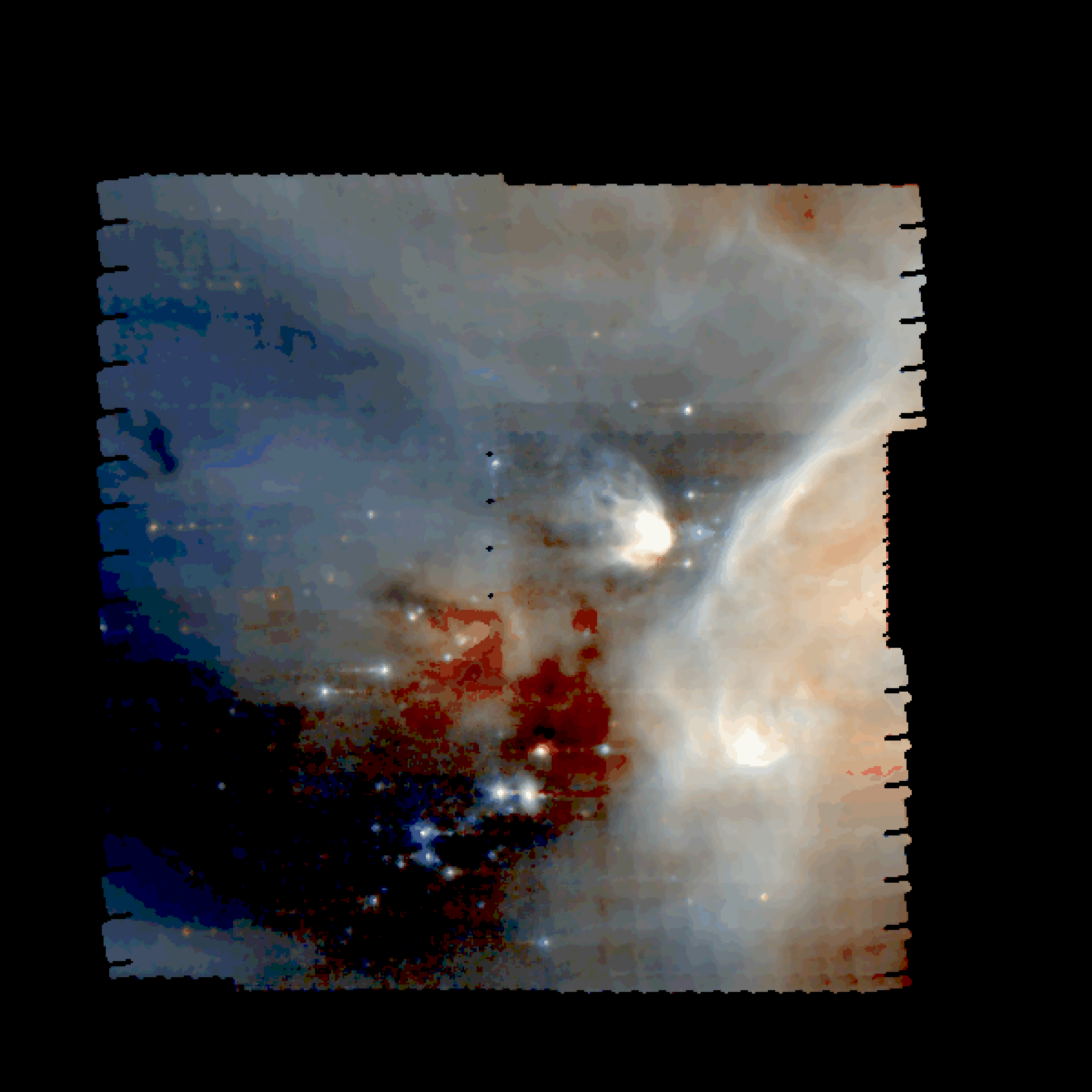Rho Ophiuchi

An image of the Rho Ophiuchi dark cloud taken with ISOCAM
The scattered bright dots are new stars of moderate size, comparable in mass to the Sun. The bright fuzzy object, upwards and slightly to the right of centre, is a new massive star, much heavier than the Sun, still wrapped in the placental cloud from which it formed. A similar object appears partly veiled towards the bottom right of the picture. The conspicuous wisp right of centre is the interface betweeen the dense cloud and the general interstallar medium. In a dark region near the centre of the picture the dust is so dense that even an infrared telescope can look no further into the murk. The image is a colour composite of data taken at wavelengths of 7 and 15 microns of an area of sky approximately 0.75 x 0.75 degrees.
The high angular resolution and sensitivity of the ISOCAM observations have revealed several previously unknown characteristics of the mid-IR diffuse emission: the small scale filamentary structure (thickness 0.03 pc) of the emission at the illuminated edge of the molecular cloud, the sharpness of color variations at cloud edges, the barely resolved filamentary structure of the dust emission surrounding a bright embedded source, and several dense cores seen as sharp and deep absorption structures against the diffuse cloud background.
Rho Ophiuchi has been the subject of both a recent Astronomy and Astrophysics Letter;
"ISOCAM mapping of the rho Oph main cloud"
Abergel, A. et al. and a press release from the ISOCAM consortium;
"The Earth's Closest Star Nursery"